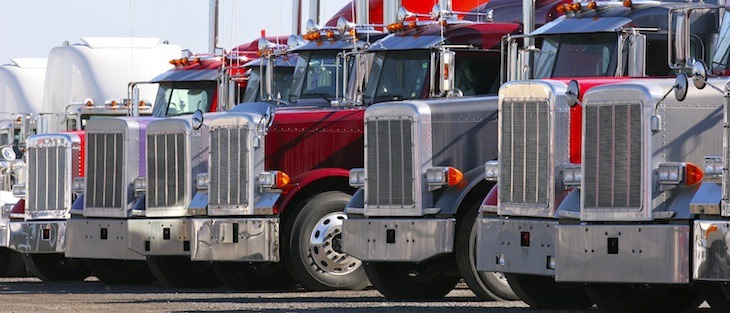Driver shortage is top issue among Arkansas trucking companies
by February 8, 2018 2:54 pm 1,137 views

Tax reform and the electronic logging mandate are expected to play a significant role in the trucking and transportation industry as the driver shortage looks to worsen in 2018.
The driver shortage is the top issue for member companies of the Arkansas Trucking Association, President Shannon Newton said.
“As the economy continues to do well, the demand for additional freight correlates, and trucking companies need to retain the drivers they have and recruit more to the industry in order to meet that demand,” Newton said. “Other issues of importance include the hours-of-service, infrastructure funding and the integration of technology to improve safety.”
The driver shortage was expected to reach 50,000 by the end of 2017, and if the trend holds, it could rise to more than 174,000 by 2026, according to American Trucking Associations. The shortage was the top issue in the annual Top Industry Issues survey of the American Transportation Research Institute, ATA’s nonprofit research organization.
The shortage was previously the top issue in 2006, and to address it, survey respondents suggested working with state and federal officials to develop a commercial driver’s license program that attracts safe younger drivers. ATRI is working to develop a tool to assess younger drivers and identify those who exhibit the same personality traits as safe, older drivers.
In 2018, the Arkansas Trucking Association plans to continue educating Arkansans about the importance of the trucking industry, the opportunities available to attract people to careers in the industry and to promote approval of policies on tax, trade, infrastructure funding and tort reform “that support a strong trucking industry in Arkansas,” Newton said.
Tax law change is expected to have a significant positive impact on the transportation sector, said John Kent, director of the Supply Chain Management Research Center in the Sam M. Walton College of Business at the University of Arkansas.
The tax changes cuts the corporate tax rate to 21%, from 35%, and the Arkansas Trucking Association and American Trucking Associations supported it. The organizations also support a 20-cent per gallon gas tax increase, phased in over four years, generating nearly $340 billion in 10 years for infrastructure improvements. President Donald Trump is expected to unveil his infrastructure bill in January, and during his campaign, Trump promised a $1 trillion bill to repair roads, airports and bridges. But details of the expected bill are limited, and it will likely be much less than $1 trillion, possibly $200 billion, said Jack Atkins, transportation analyst for Stephens.
Infrastructure improvements will remain at the top of the legislative agenda, and private sector capital expenditures are expected for truck-and-rail intermodal and river, rail and truck intermodal terminals, Kent said. Progress continues on container-on-barge intermodal facilities along the Mississippi and Arkansas rivers.
On Dec. 18, 2017, the ELD mandate went into effect, but enforcement officers won’t start placing truck drivers out of service until April 1, 2018. The mandate requires drivers who track hours of service with paper logs to do so using an ELD. Atkins expects the mandate to reduce capacity between 3% and 5%, and with an already tight market, the reduction could lead truckload contract and spot rates to rise in 2018. Benjamin Hartford, transportation analyst for Baird, expects truckload contract rates to rise in the mid-single digits in 2018.
“The freight market is currently very strong,” Newton said. “The 2017 tonnage figures have been solid, including the best holiday spending season in several years. Several segments of the economy are performing really well, which makes most of our members encouraged that 2018 will continue the positive trend.”
Some of the sectors benefitting the industry include food and non-food consumer goods and raw materials to support manufacturing and construction, Kent said.
Something to not expect in 2018 is driverless trucks.
“While much of the technology required for driverless vehicles exists, I don’t see the implementation of trucks without drivers on our highways anytime in the near future,” Kent said. “Platooning and non-collision technologies are in place and being used successfully now; however, eliminating the driver is still a few years out.”
Soon, multiple manufacturers, including Tesla, will start producing electric trucks for short haul and final mile pickup and delivery. Also, artificial intelligence technology is expected to improve load matching for carriers and shippers.
In November 2017, ATA’s seasonally adjusted For-Hire Truck Tonnage Index rose 7.6% to 151.8, from the same month in 2016. Through the first 11 months of 2017, the index has risen 3.5%, from the same period in 2016. Also in November, the Cass Freight Index on shipments and expenditures rose 6.3% and 14.3%, respectively. The shipments index rose to a level that exceeded all previous Novembers since 2007, and the expenditures index, or the total amount spent on freight, increased by the highest percentage in five years.
